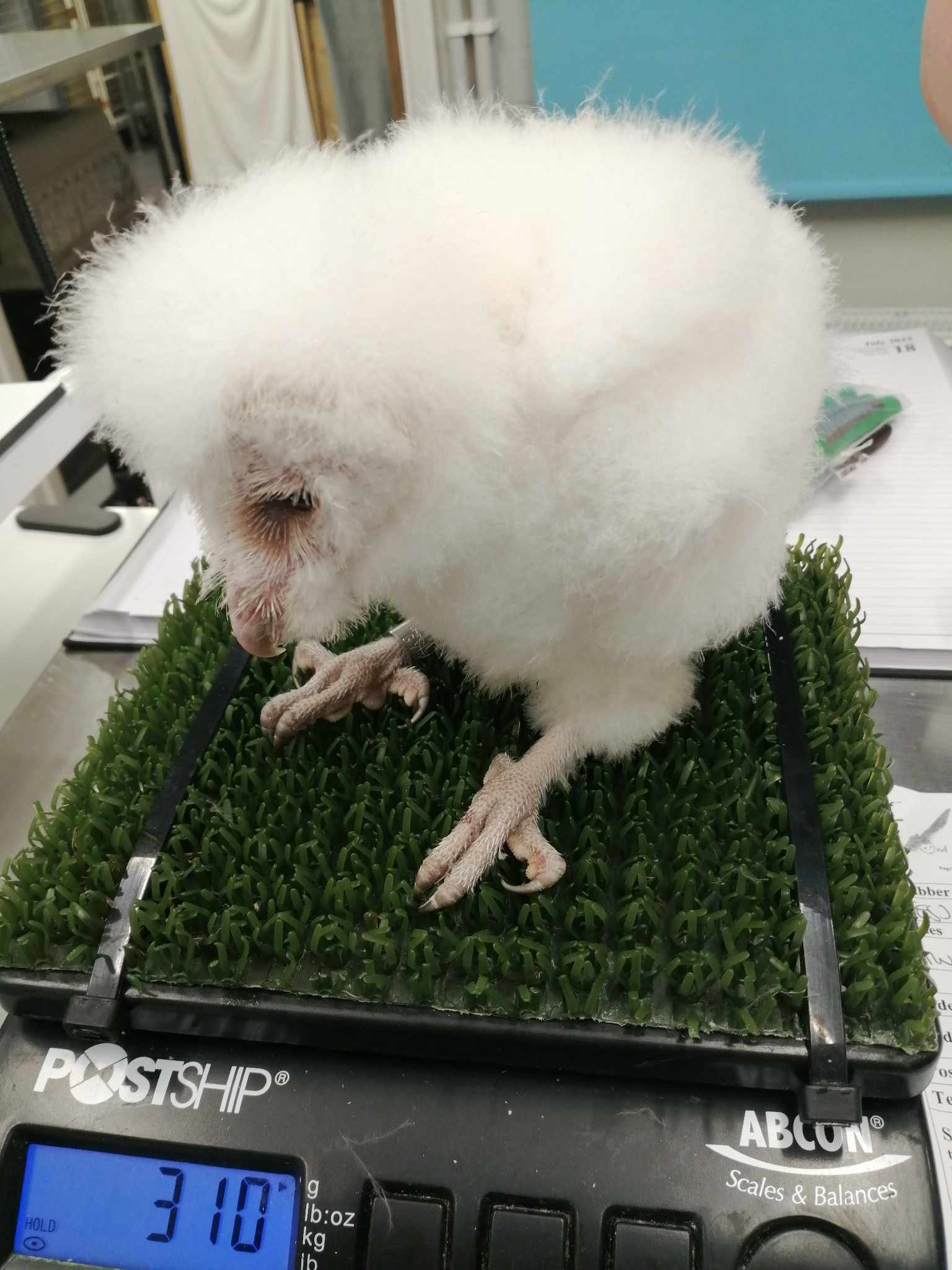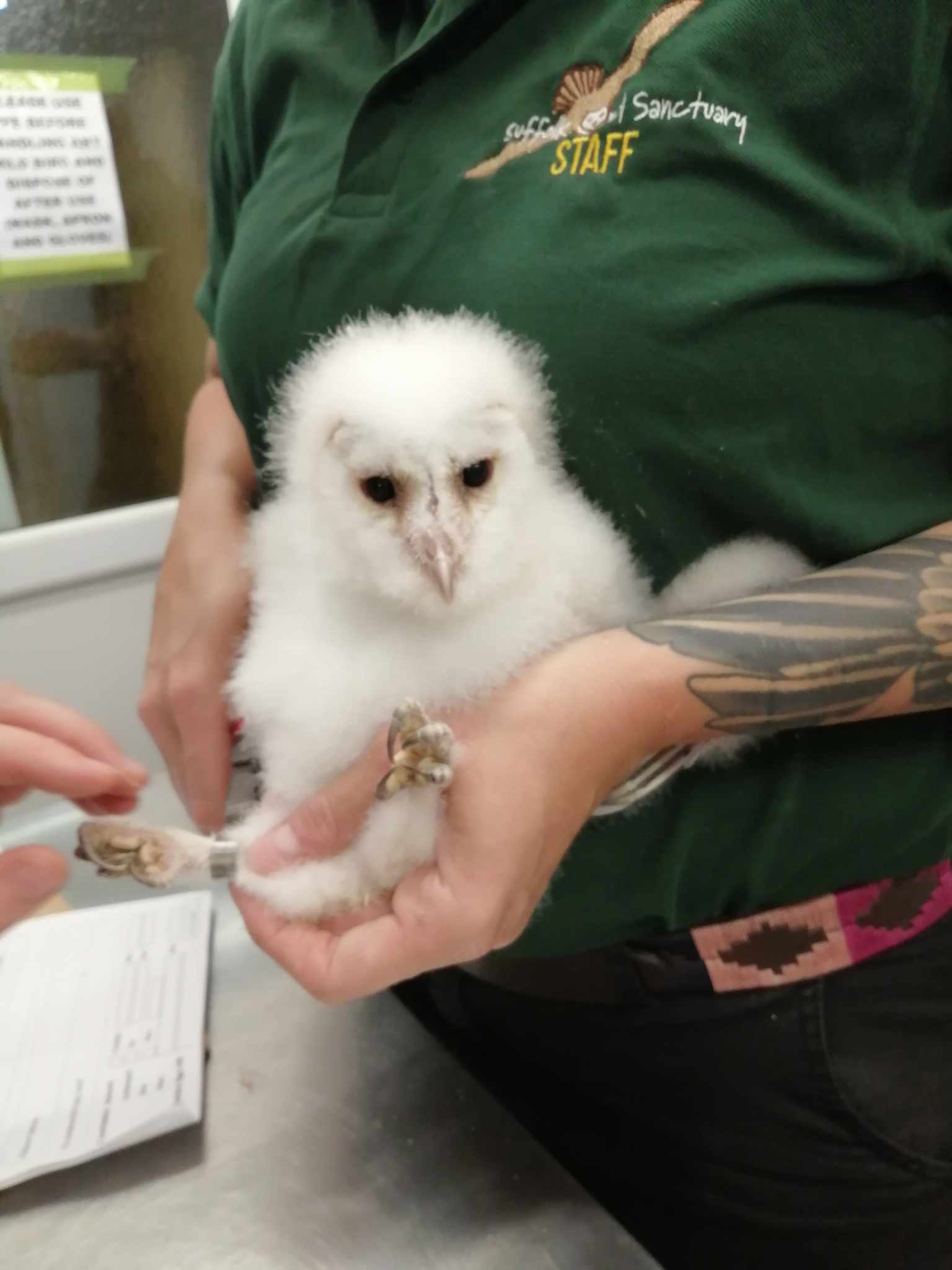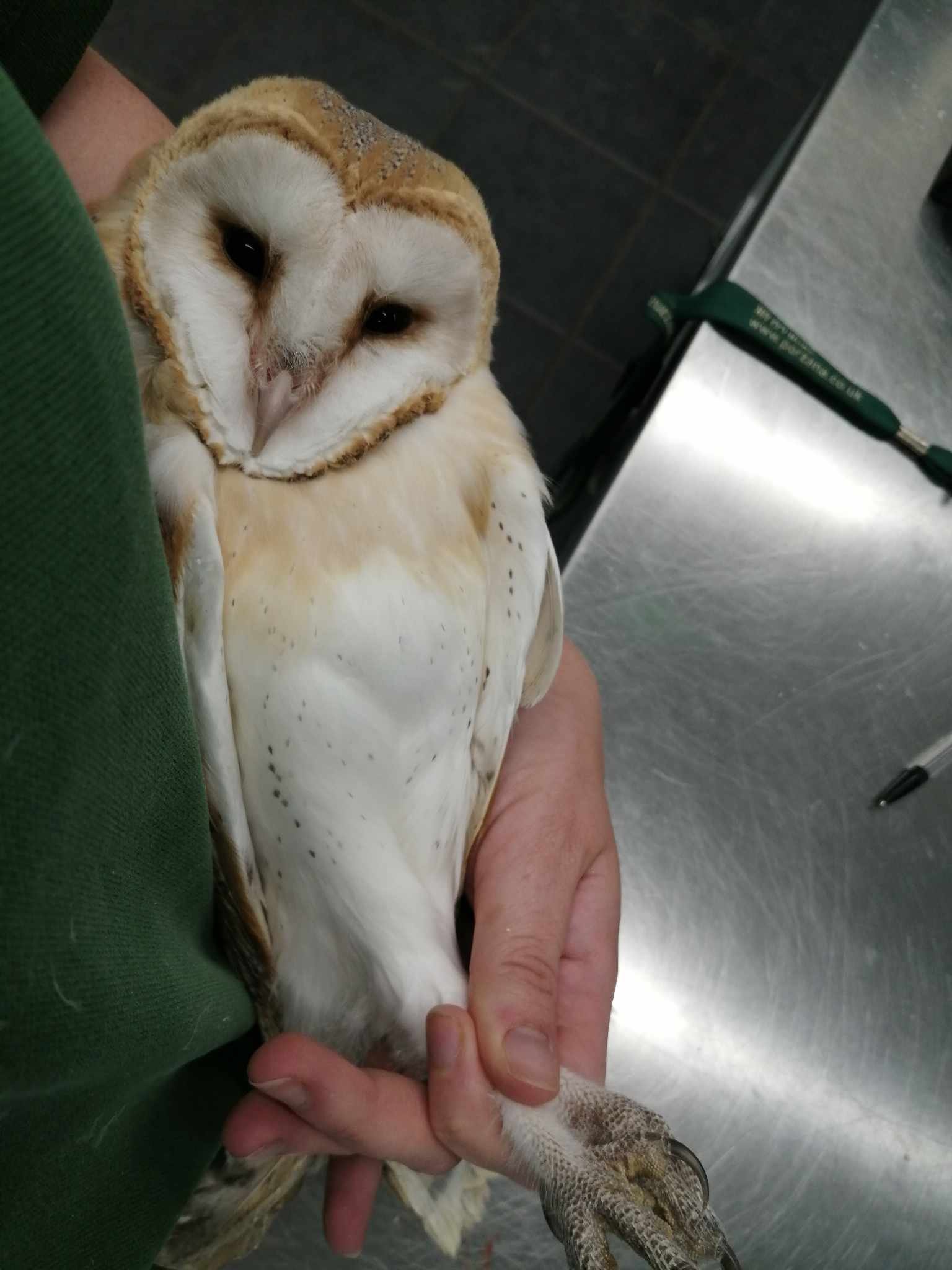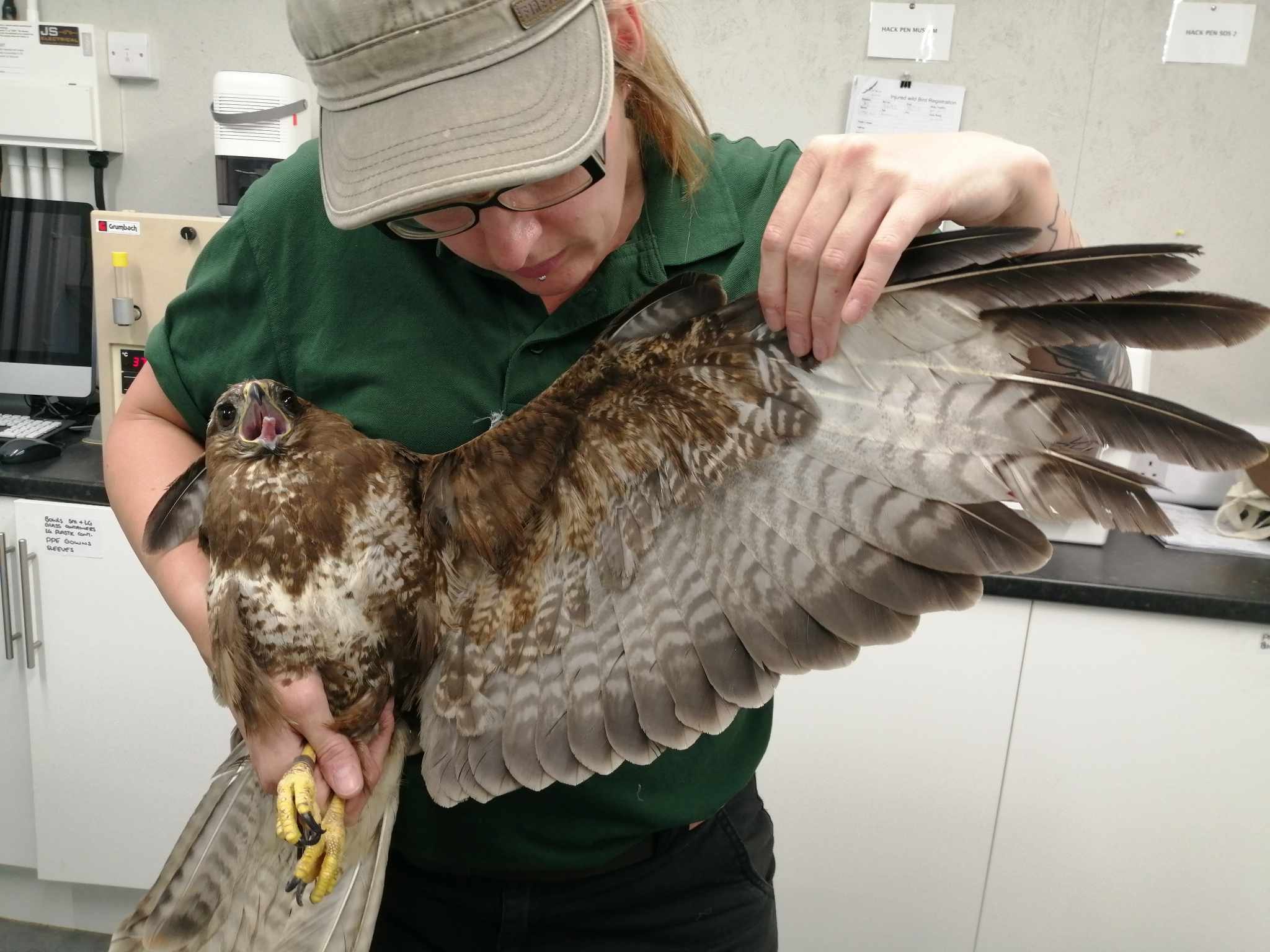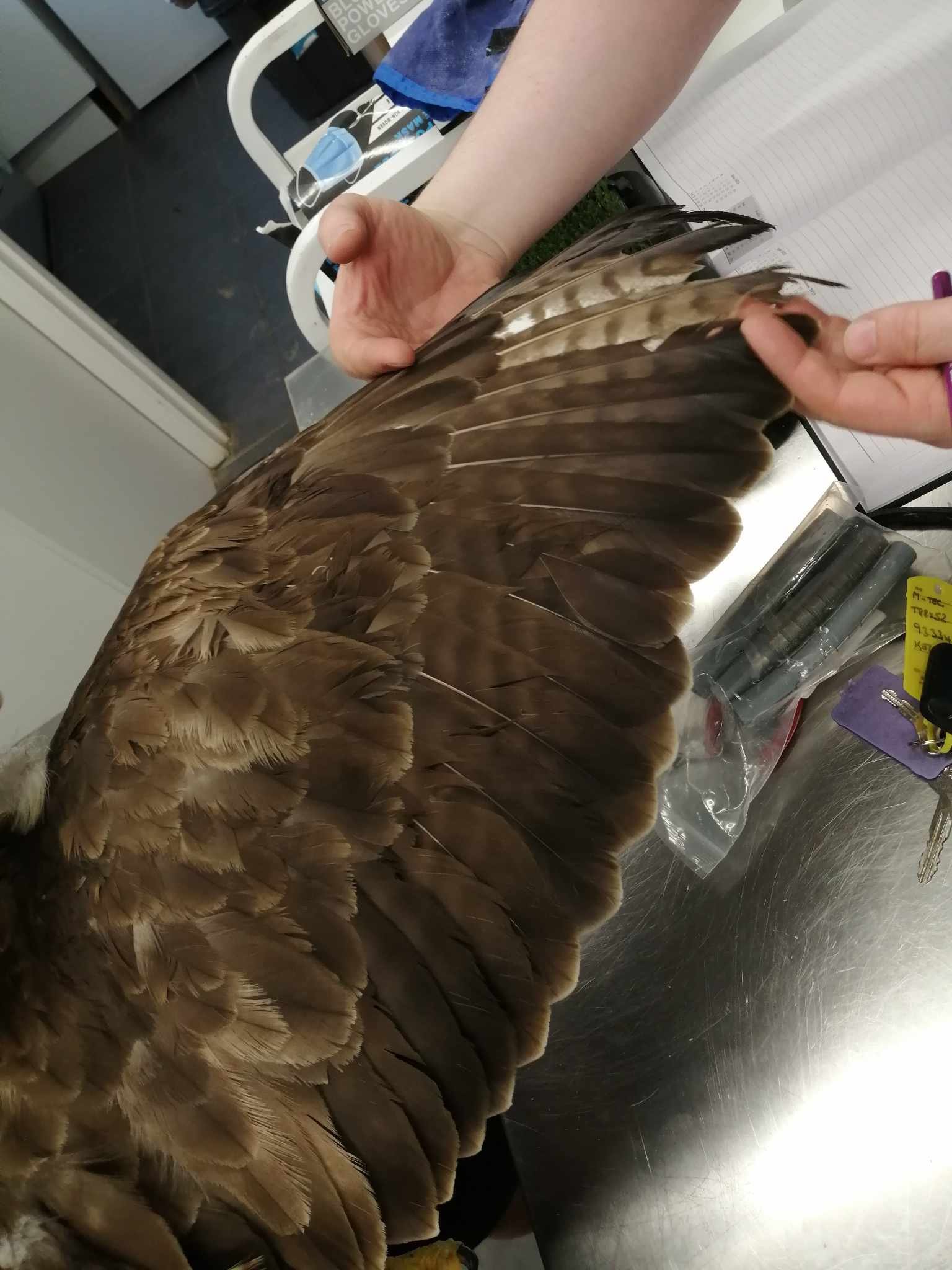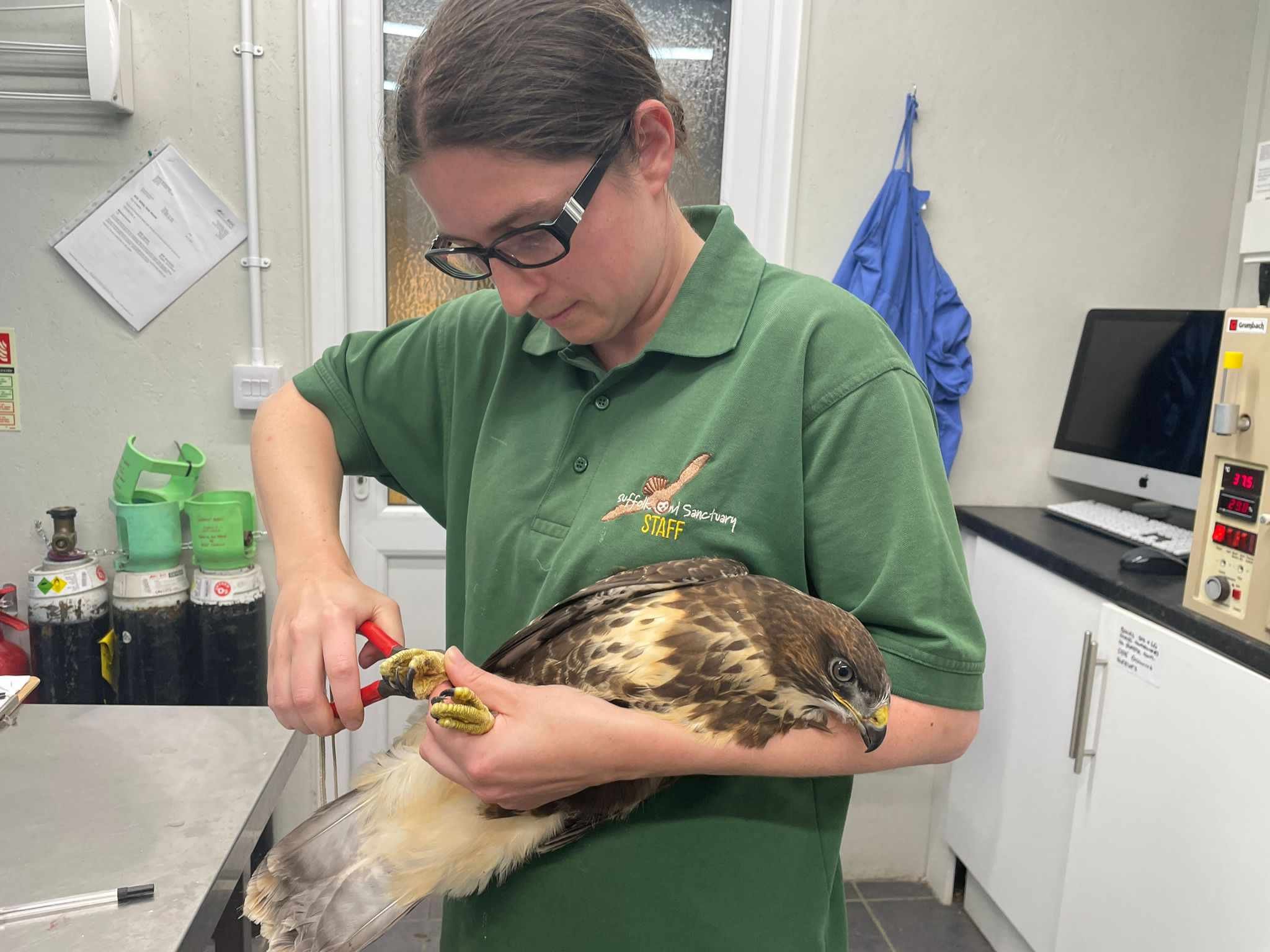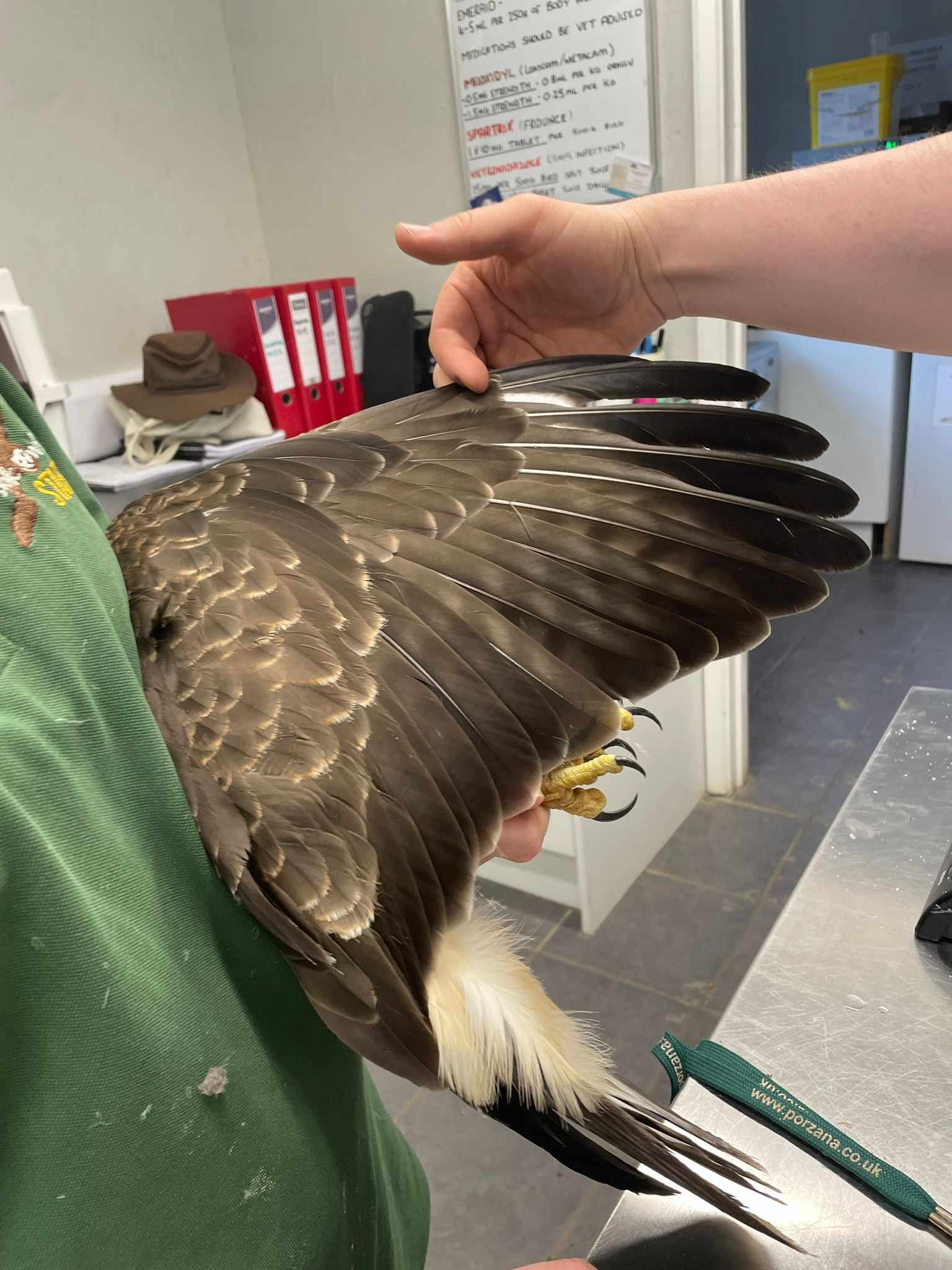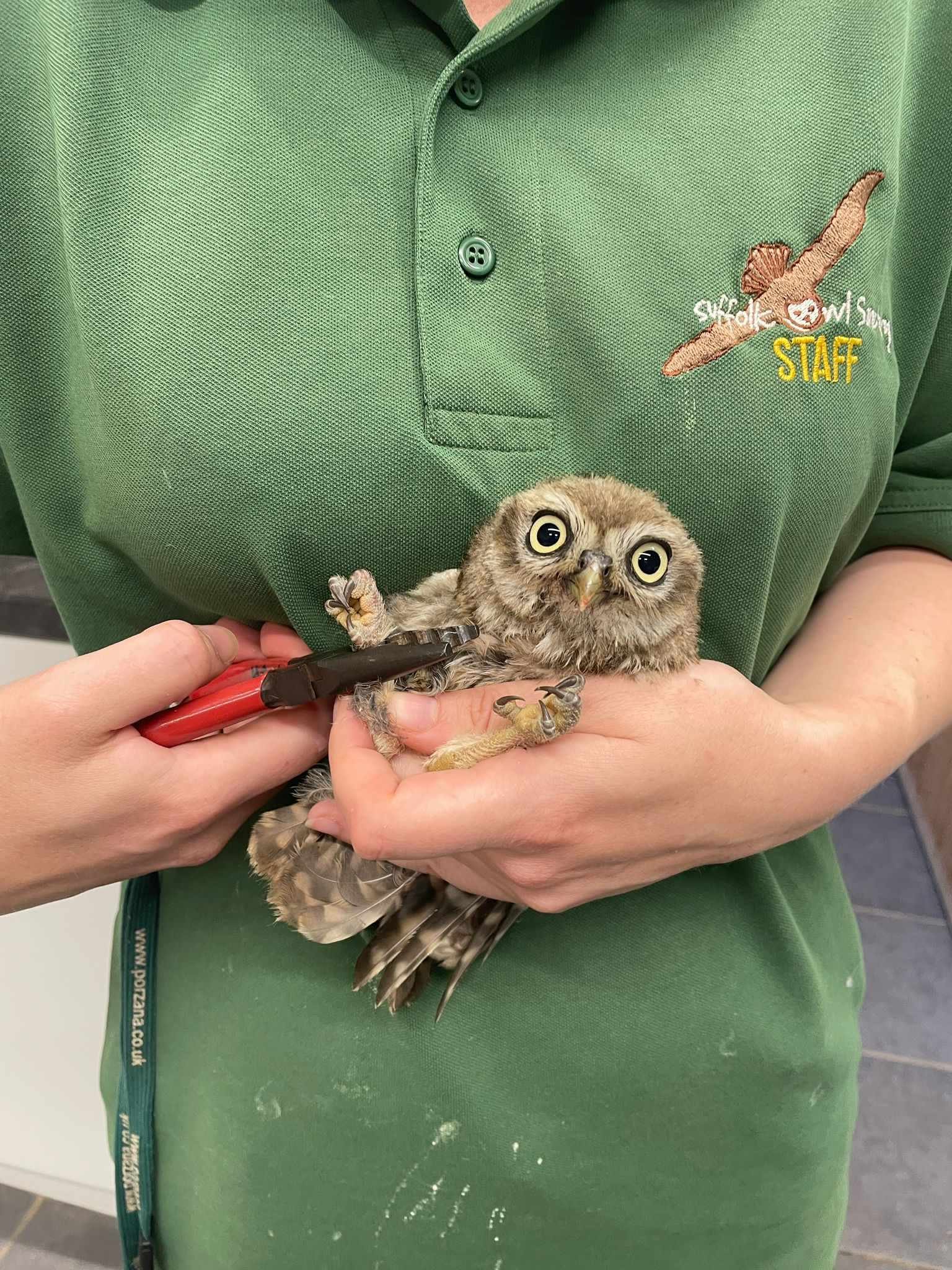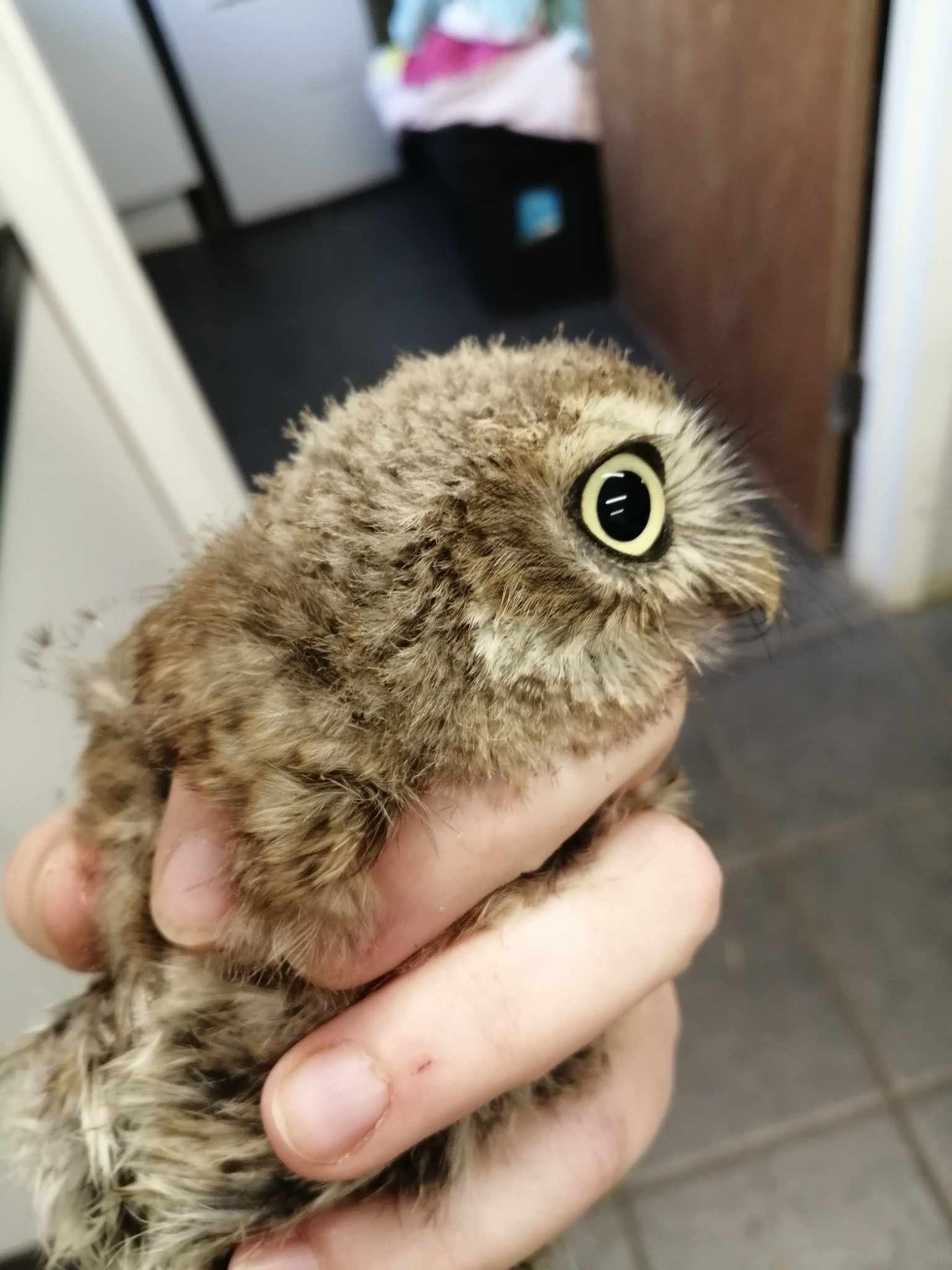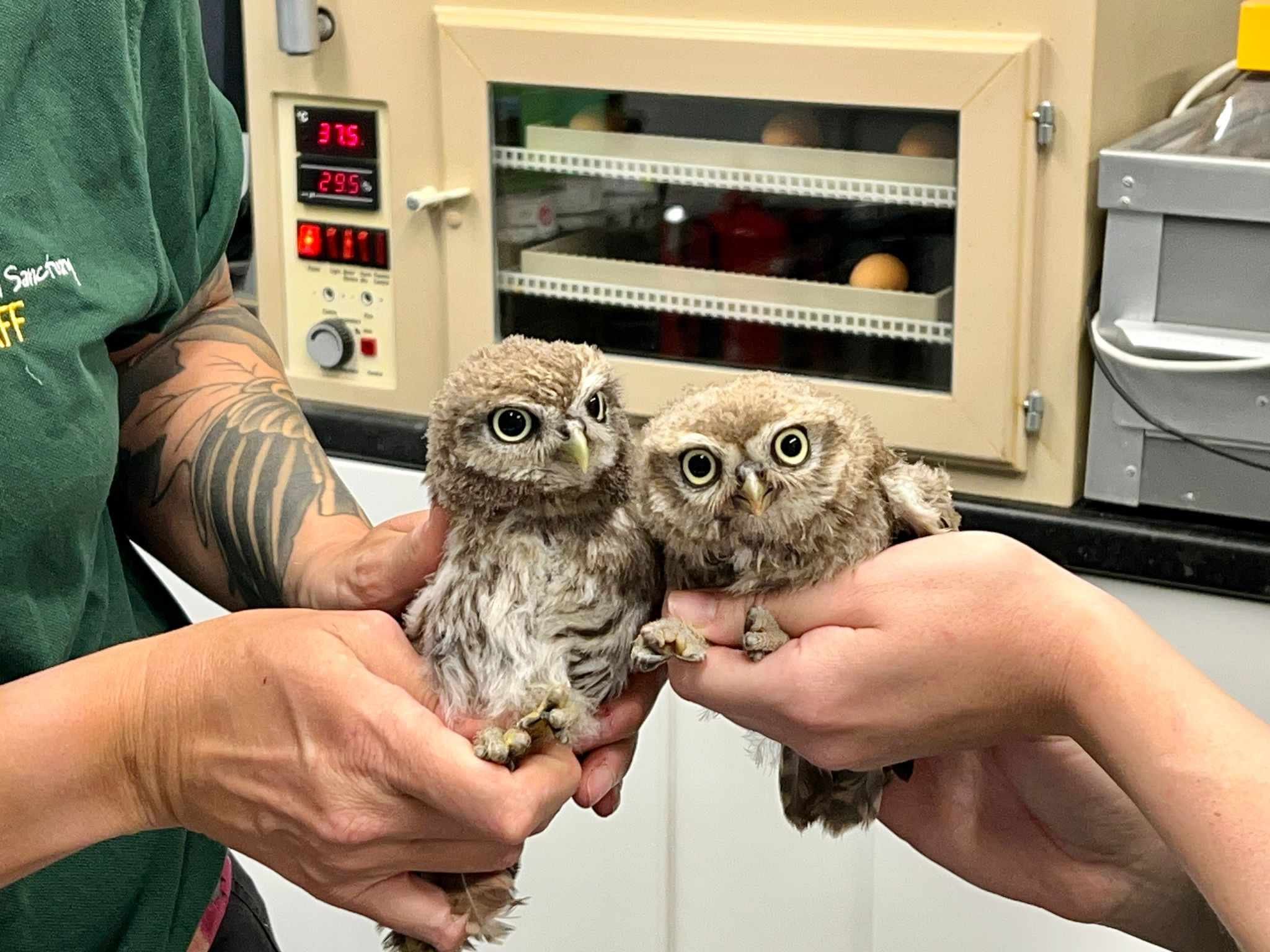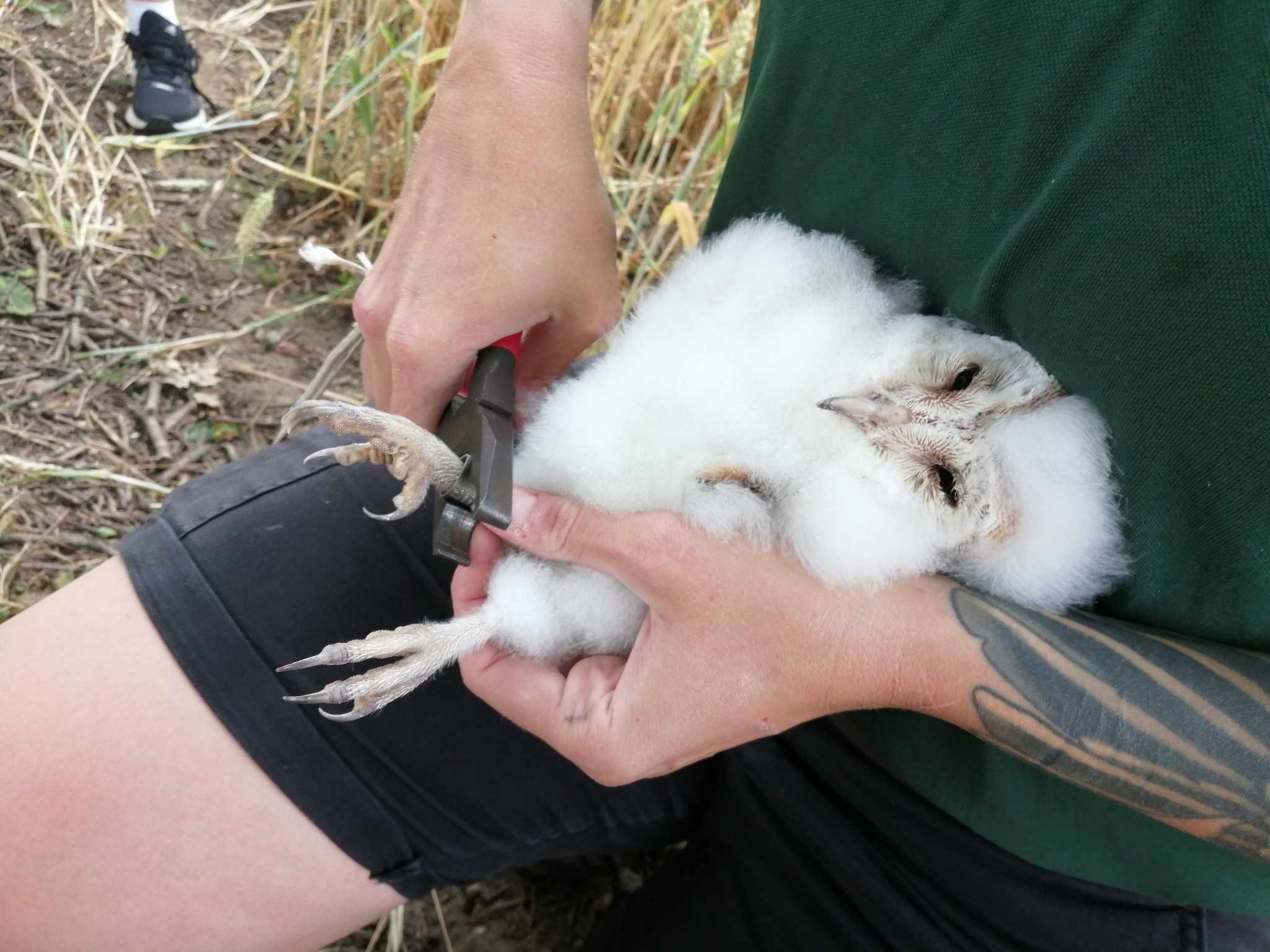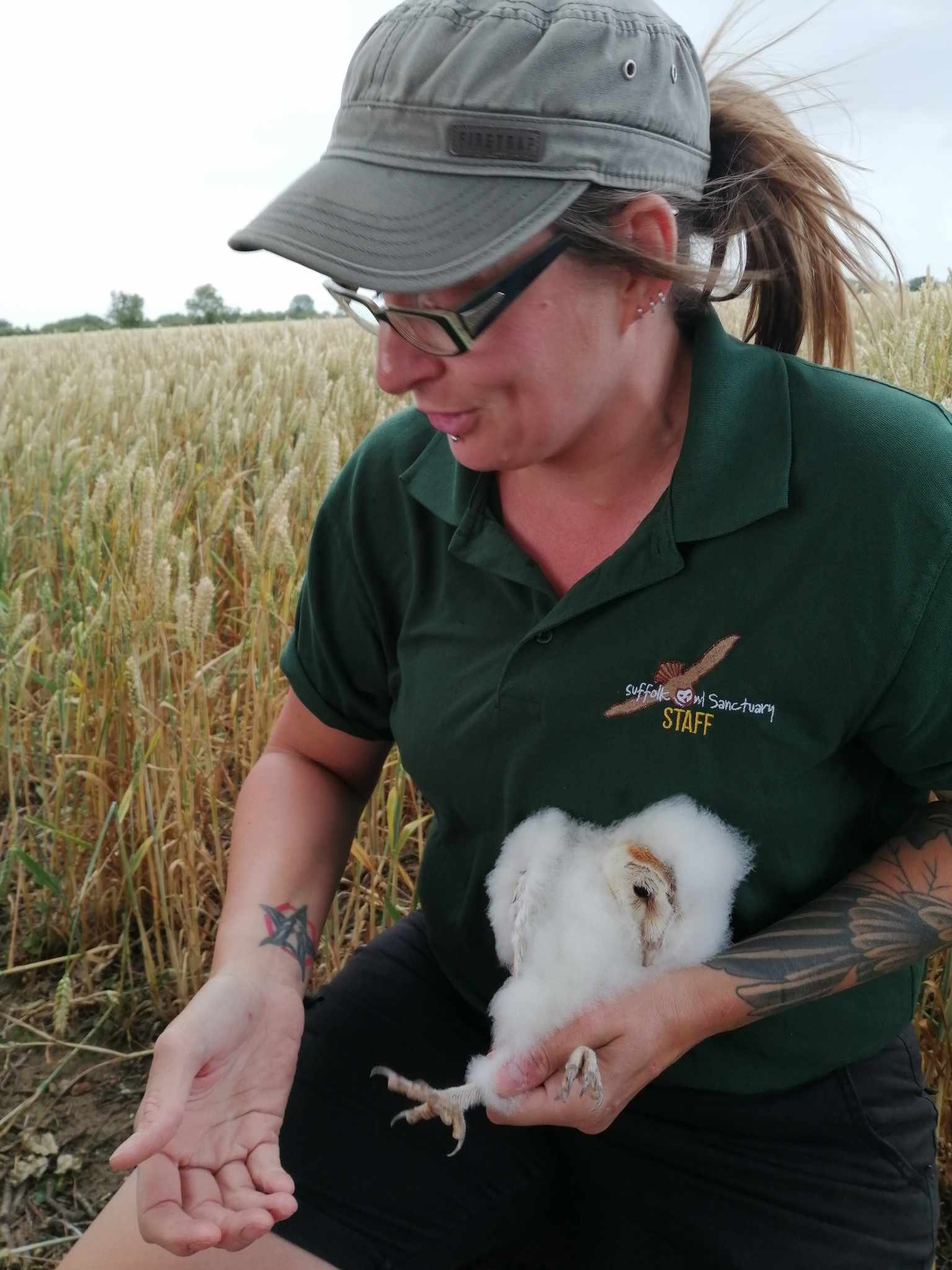Earlier this week, we invited Dr Hugh Hanmer to ring some of our Hospital patients before they were released.
We hope that by ringing as many of our patients as possible before they are released, we can get a better idea that our efforts work. Each bird is fitted with a ring which is inscribed with an individual alpha-numeric code. This means that if this bird is found again in the future, we can find out where it’s moved to and how it was doing after release. We always hope that one day we will find one of our released Raptor Hospital patients breeding in a nest box. We also take biometric measurements to add to the national database, held by the British Trust for Ornithology.
Here are the stories about the most recent birds to be ringed and what the ringing process told us about them.
Cloud Barn Owls
These two very young Barn Owls were brought to us after their nest box collapsed in bad weather. The mother flew off so we stepped in to rear them. Thankfully, they were uninjured and were very lucky to have been found and brought to us, as they would not have survived by themselves.
These two were too young to sex, but as they’ll be with us for a little while longer, we may check them again before they are moved to a hack pen.
Fledging Barn Owls
These two older Barn Owlets were being monitored by a bird ringer, when he found three chicks on the ground outside the box. One of the chicks flew off, but these two were very weak so they were brought to us for assessment. They were both very thin but after 24 hours and some good food, they both perked right up! Being a bit older, we were able to sex them, with the larger bird identified as a female from the spots on her breast feathers, and the smaller one a male, as he was spotless.
These two will be returned to near where they were found over the next week or so, and will go into a hack pen so we can assess their hunting ability before release.
Big Buzzard
This large Buzzard was brought in with a tear on her wing, we suspect from an altercation with another bird. She was treated with pain relief and the wound has healed nicely. When we caught her up for ringing, she put up quite a fight, suggesting that she had a bit of life experience. By looking at the feathers in her wings, we were able to age her as a third year bird, as Buzzards only replace a few feathers each year. We also weighed and measured her wing, which put her at the top end of the scale for biometric measurements.
She will be released soon near where she was found.
Young Buzzard
This recently fledged Buzzard was found grounded. During the initial assessment, the team found that he had a bacterial infection which was treated with antibiotics. Now that he has made a full recovery, he was ready to be ringed. Based on his size, we are confident that he is a male, and typical of young Buzzards, when approached, he just freezes and doesn’t really put up much of a fight (unlike the older female). He has been moved to an outdoor aviary to build up some fitness before going to a hack pen.
Little Owls
We’ve had a very busy season of Little Owlets, and a new one arrived just before Hugh got to us. This Owlet was found……………(road/ stables???)
It was ringed alongside another which has been with us for a short time having been found weak.
Both these Little Owlets have been added to the remaining group, and will likely go out all together to a hack site soon.
Kestrels
We’ve had two young Kestrels in recently. The first one is a female who came in unable to fly. She was very overweight for her size, and has been on a strict diet since arriving. Her fitness is improving as we encourage her to fly in the aviary to find her food.
She was ringed alongside a young male, identified by his blue-grey tail covets that are growing through. He was found very weak but has now improved and it’s likely that these two might be released together from a hack pen when they are ready.
Singleton Barn Owl
We also took the opportunity to visit a local Barn Owl box that was checked a few weeks ago with a single very young Barn Owl chick. This box was installed two years ago by local farmer Sam Broughton, who manages his land with wildlife in mind. The box was paid for by a kind donation from one of our long-standing volunteers Linda, so we were very pleased to find it occupied.
On our most recent check, the single chick was alone in the box, which is perfectly normal, as the parents often opt for a quieter life and as soon as the chicks start becoming a bit too demanding for food, the parents will find an alternative roost nearby to spend the daytime. This chick was a decent size and Jess was able to ring it, under the supervision of Hugh who holds the necessary licences to monitor and disturb this protected species. She also had an audience, as Sam had his young family come out to watch, as it’s not every day you get to see a young Barn Owl being ringed! The Owlet was quickly returned to the box and will likely stay there for at least another 3-4 weeks before venturing out to hunt in the field margins. A true farmers friend!

